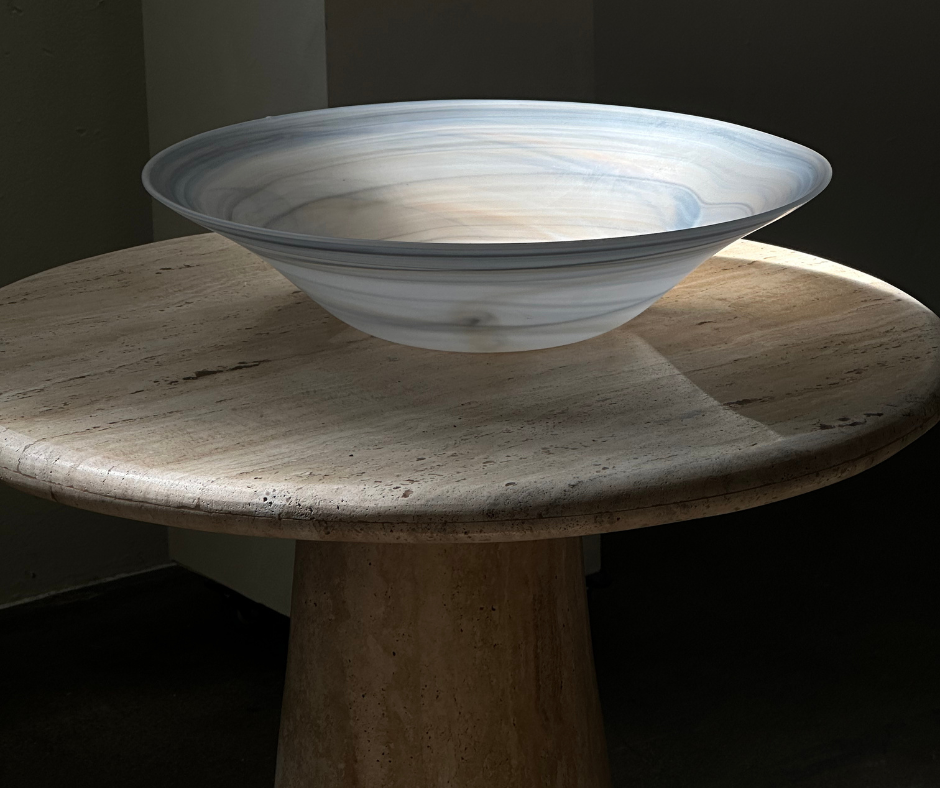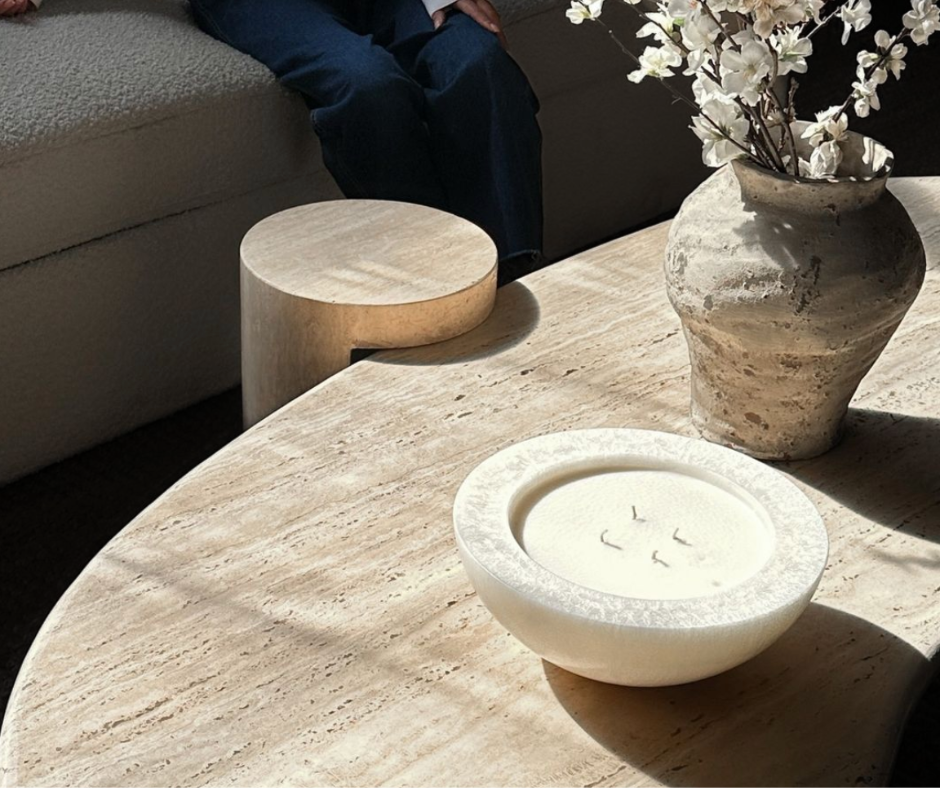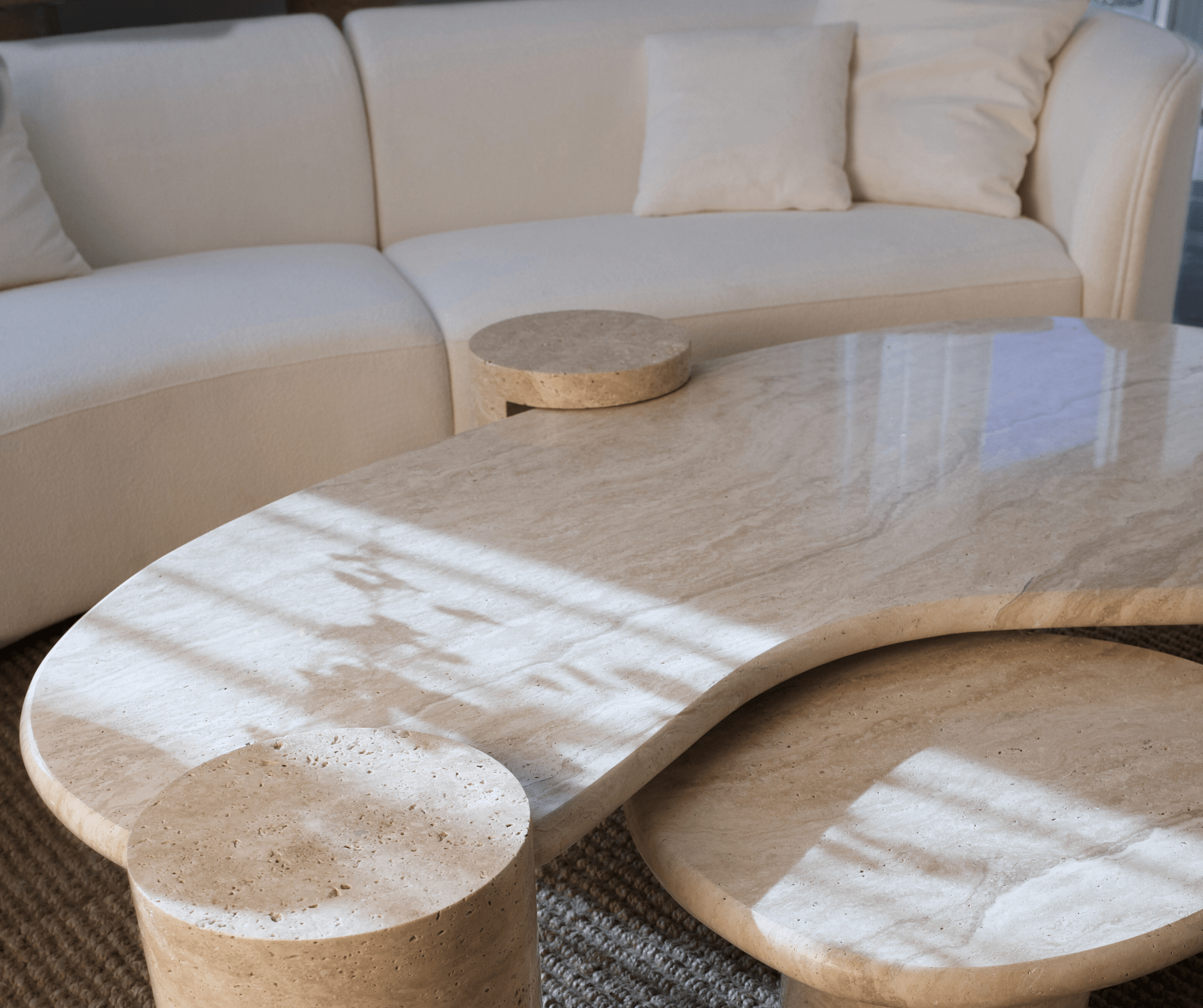Travertine boasts a natural beauty, sculpted from the unique variations that set it apart from other natural stones.
Maintaining the cleanliness of your travertine furniture is paramount for both its timeless beauty and long-term durability.
This elegant natural stone is renowned for its captivating patterns and sophisticated appearance, and regular cleaning plays a pivotal role in preserving these intrinsic qualities.
Routine dusting with a soft cloth or gentle brush not only enhances the visual appeal by removing surface dirt but also protects against scratches, maintaining the pristine charm of your travertine pieces.
Let's talk about how to clean travertine table and what is its importance in this article.
WHY IT IS IMPORTANT TO MAINTAIN YOUR TRAVERTINE SURFACES

Keeping your travertine furniture impeccably clean is crucial for preserving its inherent beauty and ensuring longevity.
Regular cleaning routines, including gentle dusting and wiping with mild solutions, serve as a shield against stains and scratches that can compromise the elegance of this natural stone.
The porous nature of travertine stone requires proactive care, with cleanliness not just contributing to aesthetics but acting as a preventive measure against potential damage.
By embracing a consistent cleaning regimen, you not only maintain the pristine appeal of your travertine furniture but also create an environment that radiates sophistication and enduring charm.
It's a holistic approach that safeguards both the visual allure and structural integrity of these timeless pieces, allowing you to revel in the grace of your travertine furniture for years to come.
If you have a polished travertine surface, the chances of getting stains in pretty low as they aren't prone to that and you don't even need to have a steam cleaner in that case.
7 EFFECTIVE WAYS TO KEEP YOUR TRAVERTINE CLEAN

ROUTINE DUSTING
Start with daily dusting using a soft, dry microfiber cloth or a feather duster. This helps remove loose dirt and prevents scratches. Focus on the surface and edges of the table, paying attention to any intricate details.
A COMBINATION OF MILD SOAP AND WARM WATER
Create a gentle cleaning solution by mixing a few drops of mild dish soap with warm water.
Dampen a soft cloth or sponge in the solution, wring it out well, and wipe down the entire surface of the travertine countertops/ table. This method is effective for general cleaning and removing light stains.
USE A PH-NEUTRAL STONE CLEANER
Invest in a pH-neutral stone cleaner designed for natural stone surfaces, including travertine floors. Follow the manufacturer's instructions for application.
These cleaners are specifically formulated to clean without causing damage to the stone. Whether you are using a travertine table in your kitchen, stone fireplace surrounds, or any other place, you can follow this tip to make it look cleaner than ever before.
AVOID ANY ACIDIC CLEANERS
Avoid using acidic cleaners like vinegar or lemon juice, as they can damage the surface of the travertine.
Acidic substances can lead to etching, dulling the polished finish. Stick to pH-neutral or stone-specific cleaners for safe and effective cleaning.
CREATE A POULTICE FOR OPTIMAL STAIN REMOVAL
For stubborn stains, especially those from colored liquids, create a poultice using baking soda and water.
Apply the poultice to the stained area, cover it with plastic wrap, and let it sit for 24 to 48 hours. This method helps draw out the stain from the pores of the travertine.
SEAL YOUR TABLES FOR PROTECTION
Consider applying a penetrating sealer to enhance the stain resistance of your travertine table. Follow the manufacturer's guidelines for application.
Sealing creates a protective barrier, preventing liquids from penetrating the stone and causing stains.
PARTAKE IN PREVENTIVE MEASURES
Take preventive measures to avoid scratches and heat damage.
Use coasters or placemats under glasses to prevent scratches, and use trivets or heat-resistant pads under hot items to protect the table from heat damage.
These simple precautions contribute to the long-term preservation of your travertine table.
Frequently Asked Questions

What is Travertine Furniture?
Travertine furniture encompasses items crafted from the natural stone known as travertine, formed in mineral springs. Widely utilized for tables, chairs, and decorative pieces, it is highly valued for its distinctive veining patterns and elegant aesthetic.
How Do I Clean Travertine Furniture?
Maintain the cleanliness of travertine furniture by gently wiping it with a soft, dry cloth on a daily basis. In the case of stains, employ a mild solution of soap and water or a pH-neutral stone cleaner. Steer clear of acidic or abrasive cleaners to prevent potential damage to the stone.
Can I Use Vinegar to Clean Travertine Furniture?
Refrain from using vinegar on travertine furniture. The acidic properties of vinegar may cause etching on the stone, resulting in dull spots and potential damage. Opt instead for pH-neutral cleaners specifically formulated for natural stone to ensure the preservation of your travertine furniture's integrity and appearance.
Is Travertine Furniture Durable?
Travertine, while durable, demands attentive care. Resistant to heat and thus suitable for furniture, it remains susceptible to scratching from abrasive materials. Sustaining its longevity involves consistent maintenance and the implementation of preventive measures.
Can I Place Hot Items on Travertine Furniture?
Despite its heat resistance, it is recommended to place trivets or heat-resistant pads under hot items on travertine. This precautionary measure safeguards the furniture from potential heat damage and helps maintain its appearance.
How Often Should I Clean and Seal Travertine Furniture?
Regularly clean travertine furniture, particularly after spills or stains. The sealing frequency depends on usage and exposure. As a general recommendation, reapply the sealer every one to three years or as advised by the manufacturer.
Can Travertine Furniture Be Used Outdoors?
Travertine furniture can indeed be used outdoors, but it necessitates specific care. Ensure that the furniture is explicitly designed for outdoor use and conduct regular cleaning to prevent weather-related damage. For added protection, use outdoor-specific sealers.
Can I Repair Scratches on Travertine Furniture?
Minor scratches on travertine furniture might be repairable. It's advisable to seek guidance from a professional stone restoration specialist for effective solutions. Additionally, incorporating preventive measures, such as using coasters and placemats, helps minimize the risk of scratches and etch marks.
Can Your Travertine Furniture be placed in direct sunlight?
While travertine boasts durability and heat resistance, placing a travertine table in direct sunlight for extended periods may result in potential effects such as color fading.
In the meticulous choreography of caring for your travertine tables, the significance of a dedicated cleaning routine unfolds as a narrative of preservation and appreciation. Each wipe, each gentle touch, becomes a gesture towards sustaining the natural elegance of the stone, safeguarding it from the subtle but persistent forces of time.
As you conclude the cleaning process, a renewed vibrancy emanates from the polished surface, telling a story of enduring beauty. Your travertine tables, now pristine and refreshed, stand as testaments to the commitment to their upkeep, promising to be both functional pieces and timeless works of art that enrich your living space.
Discover the beauty of travertine with our exceptional Tuscani Travertine Collection, fusing the inherent durability and luxe allure of travertine stone.







